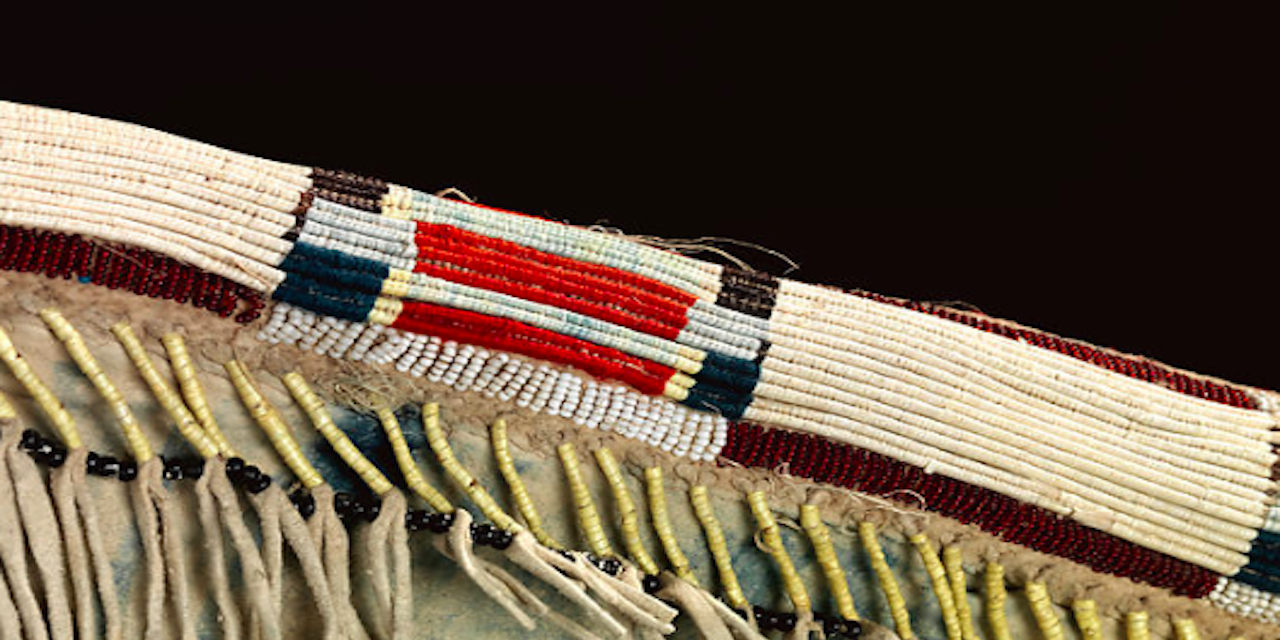
The Enduring Art of the Quill: A Masterclass in Indigenous Decorative Techniques
In the vast tapestry of human artistic expression, few forms encapsulate the intricate beauty, cultural depth, and sheer dedication as profoundly as traditional porcupine quill decorative art. Predating European contact by millennia, this unique and labor-intensive craft stands as a testament to the ingenuity and aesthetic sensibilities of Indigenous peoples across North America, transforming the humble quills of the porcupine into breathtaking masterpieces of wearable art, ceremonial objects, and decorative items. Far from mere decoration, quillwork is a language, a prayer, and a living connection to ancestral knowledge.
Roots in the Earth: A Legacy Forged in Time
The origins of porcupine quillwork are shrouded in the mists of time, with archaeological evidence suggesting its practice dates back thousands of years. Before the advent of glass beads introduced by European traders, porcupine quills, along with shells, bone, and seeds, were among the primary materials for embellishment. Indigenous nations, particularly those of the Great Lakes (such as the Anishinaabe, Ho-Chunk, Potawatomi, and Ojibwe), the Plains (Lakota, Dakota, Cheyenne, Crow), and parts of the Northeast (Haudenosaunee, Cree), developed sophisticated techniques, each region imbuing the art form with its distinct stylistic flair and cultural significance.
Quillwork was not simply an aesthetic pursuit; it was deeply interwoven with the spiritual and social fabric of communities. Adorning moccasins, clothing, pipe bags, birch bark boxes, and ceremonial regalia, the art spoke of identity, status, and spiritual connection. The porcupine itself, a creature of the forest, was revered for its defensive quills, symbolizing protection and resilience. Master quillworkers, often women, were held in high esteem, their patience and skill considered gifts. As one Elder often quoted by contemporary quillworkers states, "It’s not just art; it’s a prayer, a story, a connection to our ancestors, a way to honor the animal that provides."
The Material: Quills from the Forest Guardian

The foundation of this intricate art lies, of course, with the porcupine (Erethizon dorsatum). Gathering quills was, and remains, a respectful and ethical process. Traditionally, porcupines were hunted for food, and their quills were carefully harvested afterwards. Modern practitioners often gather quills from animals that have naturally shed them or from roadkill, ensuring no harm is done solely for the quills. The quills vary in length and thickness, from tiny ones around the face and belly, perfect for fine detail work, to longer, sturdier ones from the back and tail, used for larger patterns and structural elements.
Once harvested, the quills undergo a meticulous preparation process. They are cleaned of any organic material, washed, and then sorted by size and color. Natural quills range from creamy white to shades of brown and black. Before dyeing, many quills are flattened. This crucial step is traditionally achieved by drawing them through the teeth, pressing them with a bone or stone, or running them through a split stick, making them pliable and easier to work with. This flattening transforms their round, hollow structure into a ribbon-like strip, essential for creating smooth, continuous lines and surfaces.
Tools of the Trade: Simplicity Meets Precision
The tools employed in traditional quillwork are remarkably simple, yet demand immense skill and precision from the artist. The primary implements include:
- Awl: A sharp, pointed tool, traditionally made from bone, antler, or hardened wood, later replaced by metal. The awl is used to pierce holes in the base material – typically birch bark or tanned leather – through which the quills are inserted or sewn.
- Sinew or Thread: Historically, sinew (animal tendon) was used to stitch quills onto leather or other soft materials. Later, cotton or linen thread became common.
- Dyes: Initially, a rich palette of colors was extracted from the natural world:
- Red: Bloodroot, sumac berries, cochineal (traded).
- Yellow: Sunflower petals, goldenrod, lichens, poplar bark.
- Blue/Purple: Blueberries, wild grapes, indigo (traded).
- Black: Oak galls, black walnut hulls, cedar bark.
These natural dyes required extensive knowledge of plants, seasons, and precise preparation techniques. With European contact, commercial aniline dyes were introduced, offering a wider, more vibrant, and more consistent range of colors, which many quillworkers readily adopted while still honoring traditional motifs.

- Base Materials: Tanned deerskin or other leathers, and birch bark were the primary canvases. Birch bark, known for its smooth surface and durability, was particularly favored for boxes and containers.
The Art of Transformation: Core Techniques
The true magic of quillwork lies in the diverse and intricate techniques used to manipulate and secure the quills onto a surface. Each method demands patience, a steady hand, and an understanding of how the quill will behave.
-
Flattening and Dyeing: As mentioned, flattening is often the first step, preparing the quills for various applications. Once flattened (if desired for the technique), quills are carefully dyed in small batches, absorbing the vibrant colors that will bring the design to life.
-
Wrapping (or "Wrapping and Sewing"): This is one of the most fundamental techniques. Flattened or unflattened quills are tightly wrapped around a strand of sinew or thread. This quill-wrapped sinew is then sewn onto the surface material, often forming borders, outlines, or filling larger areas with a textured, raised effect. The tightness and consistency of the wrapping are paramount for a smooth, even finish.
-
Sewing/Stitching (Embroidery): This is perhaps the most common and complex family of techniques, involving piercing the base material and securing the quills through these perforations. This technique is often referred to as "quill embroidery."
- Line Work: Quills are folded over and stitched down in continuous rows, creating solid bands of color.
- Couching: Quills are laid flat on the surface and then secured with small, almost invisible stitches of sinew or thread that pass over the quill and through the base material.
- Zig-zag Stitch: Quills are folded back and forth, creating a distinctive zig-zag pattern. This requires precise folding and stitching to maintain uniformity.
- Parallel Stitch: Quills are laid side-by-side and stitched down, creating a smooth, linear fill.
- Box Stitch: A more complex stitch where quills are folded and interwoven to create small, square-like patterns, often used to fill large areas with a rich texture.
- Sawtooth/Porcupine Stitch: Quills are folded in a way that creates a serrated edge, reminiscent of a saw blade or the quills of the porcupine itself.
- Looped Stitch: Quills are looped and secured, creating a raised, almost three-dimensional effect.
-
Plaiting/Braiding: In this technique, quills are interwoven or braided together before being attached to the base material. This creates strong, textured strips or bands that are then sewn onto garments or other objects. This method is often seen in decorative bands on belts or moccasin fronts.
-
Weaving: While less common than embroidery or wrapping, some quillwork involves weaving quills directly into a loom-like structure, often for narrow bands or strips used as decorative elements. This is a highly specialized technique that requires significant skill in tension and pattern creation.
Artistic Expressions and Enduring Legacy
The designs manifest in quillwork are as diverse as the cultures that created them. Early patterns were often geometric – diamonds, squares, triangles, parallel lines – reflecting a deep connection to the natural world and cosmological beliefs. With European contact, floral motifs became increasingly popular, adapted and stylized with a distinctly Indigenous aesthetic. Animal figures, spirit beings, and narrative elements also found their place in quillwork, each piece carrying layers of meaning and storytelling.
Objects adorned with quillwork are not merely functional; they are imbued with spiritual significance and cultural value. Pipe bags, moccasins, knife sheaths, cradleboards, birch bark boxes, vests, and war bonnets are among the many items that showcase the brilliance of quill artists. A single piece, such as a large pipe bag or a decorated vest, could require thousands of quills and hundreds of hours of painstaking labor. "Every stitch is a moment of reflection," says a contemporary quill artist, emphasizing the meditative and prayerful nature of the work. "It’s a commitment to beauty and tradition."
Challenges and the Modern Revival
The art of quillwork faced significant challenges through the centuries. The introduction of readily available glass beads, which were faster to apply and offered a similar decorative effect, led to a decline in quillwork production. More devastatingly, assimilation policies, residential schools, and the suppression of Indigenous cultures actively sought to eradicate traditional practices, including art forms like quillwork. Much knowledge was lost, and many techniques teetered on the brink of extinction.
However, in recent decades, there has been a powerful resurgence. Indigenous communities are reclaiming their cultural heritage, and master quillworkers, often Elders who learned from their grandmothers, are diligently teaching new generations. These dedicated artists are meticulously studying museum collections, analyzing old pieces, and experimenting to rediscover forgotten techniques. They are adapting traditional methods to contemporary contexts, creating new designs while honoring the ancestral spirit of the craft.
Today, porcupine quillwork is recognized globally as a sophisticated and unique art form. It stands as a vibrant testament to Indigenous resilience, creativity, and the enduring power of cultural identity. Each meticulously placed quill, each vibrant color, and each intricate pattern tells a story – a story of survival, beauty, and an unbroken connection to the rich artistic traditions of North America’s First Peoples. This ancient art, born from the quills of a forest guardian, continues to inspire, educate, and adorn, ensuring its legacy for generations to come.